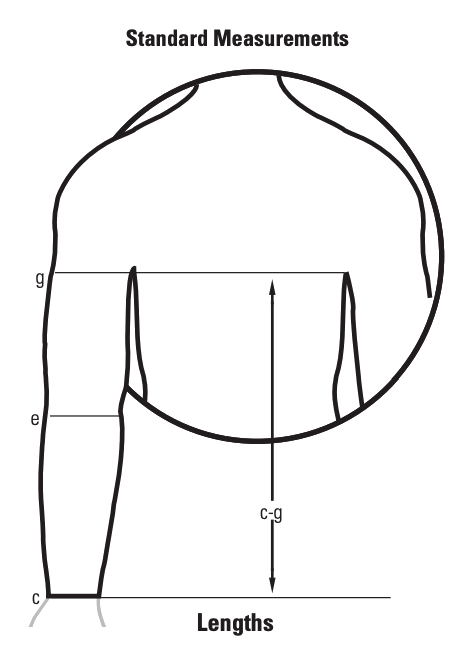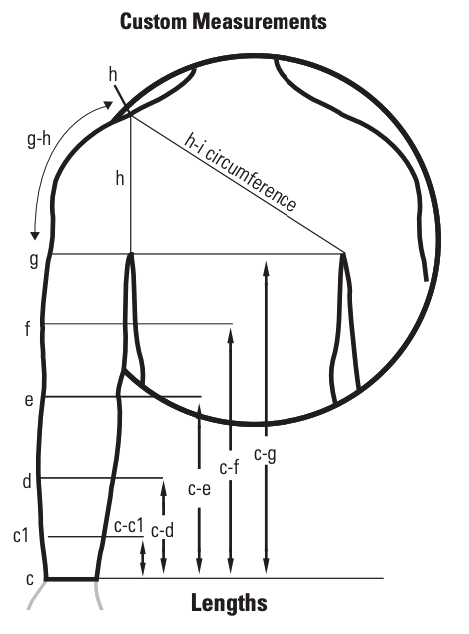Measuring Tips for Compression Sleeves

When to take the measurements
The edema must be at its most reduced state. This is often found first thing in the morning or at the end of treatment.
When to measure for a Made to Measure garment
Measure for a made-to-measure garment after determining that an arm will be too large or too small for a standard size. To resolve this, you must take the standard measurements to the right and compare them to a ready-to-wear size chart.

How to take length measurements
Length measurements should be taken at each circumference. It would help if you marked the arm with a non-permanent, non-toxic marker at each circumference measurement. The length measurement is then taken from point ‘c’ along the inside of the arm to each circumference point.
Measurement Points
Circumference point ‘c’ is the area of greatest compression and, therefore, the most crucial point. This measurement is found distally on the arm where the wrist meets the hand. One should find the smallest circumference at this point.
Circumference point ‘c1’ is taken 6cm from point “c”
Circumference point ‘d’ is the mid-point between the wrist and the elbow.
Circumference point ‘e’ is found in the middle of the elbow.
Circumference point ‘f’ is found across the biceps in the middle of the upper arm.
Circumference point ‘g’ is taken around the upper arm at the axilla. Place a book up into the armpit area to ease in determining this point. Point ‘g’ on the arm will be even with the top of the book.
Circumference point ‘h’ is a vertical measurement taken from the axilla over the shoulder. For ease in determining this point, keep the book used in point ‘g’ in place and follow a vertical line up over the shoulder.
Circumference point ‘i’ is taken from the top of the shoulder (point ‘h’) across the chest, down around the opposite axilla and returning to point ‘h’. The positioning of this strap can vary depending on how the patient prefers to wear the garment.
Length ‘g-h’ is taken on the outside of the arm from point ‘g’ up to point ‘h’.


